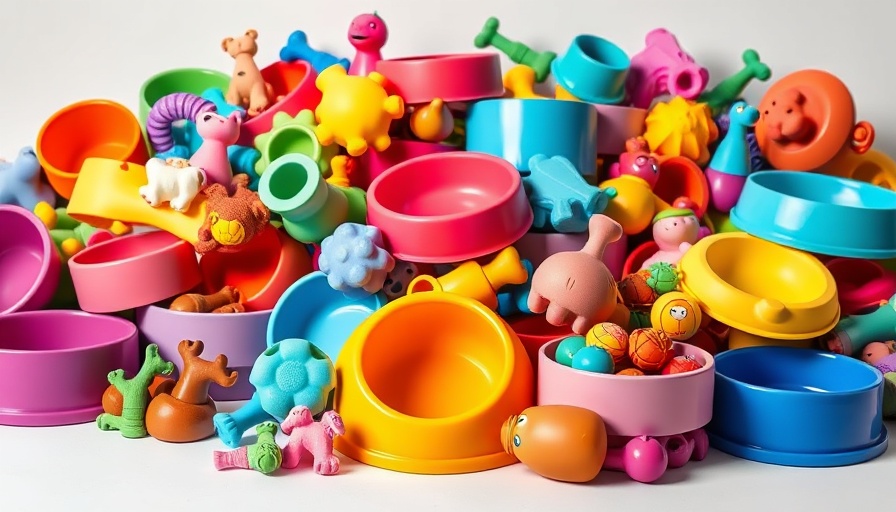
The Hidden Dangers of Plastics for Our Pets
As pet owners, we strive for the best when it comes to our furry friends. However, recent studies reveal a shocking truth: plastics are causing serious health risks for our pets. The rise of microplastics, once a distant concern primarily for humans, now poses a direct threat to our four-legged companions. According to a groundbreaking report from EarthDay.org, the degradation of plastics into tiny particles not only contaminates the environment but also permeates our pets' lives, leading to potential illnesses.
What Are Microplastics and Why Should We Care?
Microplastics are tiny plastic particles that come from larger plastic items breaking down over time. They can be found in water, food, and even the air we breathe. For pets, exposure can happen through chewing their toys or even through the food they consume, which is often packaged in plastic. The report highlights alarming findings that families might not be aware of: these microplastics can carry harmful bacteria and toxic chemicals, leading to serious health issues for pets, including cancers, liver failure, and developmental problems.
Don't Ignore the Warning Signs: Health Risks for Pets
Pet toxicity can be exacerbated by synthetic chemicals that leach from plastic products into their food and environment. Veteran veterinarian Dr. Sarah Martinez emphasizes, "The concern isn’t just about pets being exposed to these microplastics; it's about the long-term health risks they face, which are still not fully understood. Airborne microplastics and the contaminants they carry pose immediate and urgent dangers.” This critical viewpoint sheds light on the importance of awareness and proactive choices for pet owners.
Choosing Safer Options: Protect Your Pets from Plastics
So, how can we protect our pets? It begins with the environment we create for them. Here are some practical suggestions:
- Opt for Natural Toys: Instead of synthetic toys that can degrade into microplastics, choose those made from organic materials like cotton, bamboo, or natural rubber.
- Safe Bedding Choices: Bedding made from natural fibers can help limit your pet's exposure to harmful chemicals.
- Grooming Tools: Use brushes made from natural bristles to avoid introducing synthetic materials into your pet's care routine.
- Regular Cleaning: Frequent vacuuming can help reduce the amount of microplastic dust in your home, protecting both you and your pet.
- Consider Homemade Pet Food: While there are benefits to commercial pet food, it's crucial to research ingredients thoroughly and consult your vet before making any major changes.
Minding Our Pets: Responsibly Navigating the Pet Industry
The pet care market is booming, projected to exceed $500 billion by 2030. With such growth comes both opportunity and responsibility. "As pet owners, we get to choose how we respond to these industry trends," advises Amanda Seyfried, who recently shared her eye-opening experience with her dog Finn as part of a Plastic Tox Test. "Being informed is empowering, and it’s our duty to prioritize our pets' health. If your pet's food contains these harmful substances, it's time to rethink our choices."
The Path Forward: Advocacy and Awareness for Healthier Pets
Fueling changes in consumer behavior, as well as advocating for better regulations around pet products, could lead to a healthier environment for us and our pets. As we glean more insights about the hazards posed by plastics, it's imperative to share knowledge and encourage fellow pet owners to make informed decisions. Our pets depend on us for their well-being!
In conclusion, the health of our pets is intricately linked to the materials we bring into our homes. By opting for safer alternatives and remaining vigilant about product choices, we can combat the risks posed by plastics in our pets' lives. Let’s advocate for healthier living—both for ourselves and for our beloved companions!
 Add Row
Add Row  Add
Add 




Write A Comment